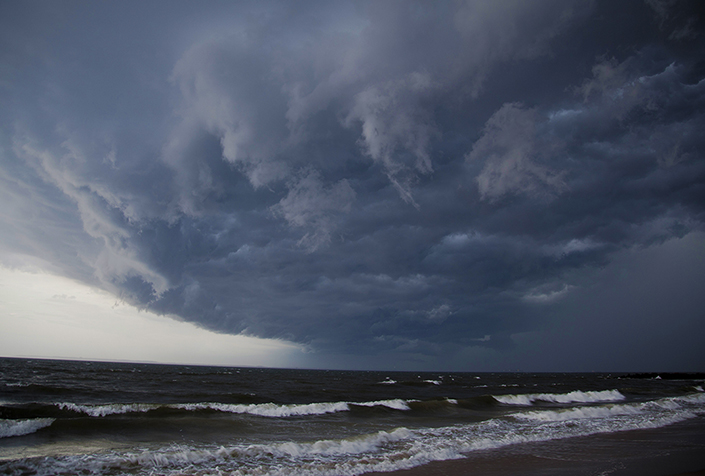‘Digital twin’ could help Galveston recover faster from severe storms

As the specter of increasingly severe storms looms over the Texas Gulf Coast, urban planners, emergency planners, policymakers and citizens seek to protect Galveston and coastal areas’ infrastructures from catastrophic damage.
To funnel hazard resilience efforts from numerous federal, state, and local agencies into a cohesive strategy, Xinyue Ye, Texas A&M associate professor of urban planning, is heading a multidisciplinary team of scholars who are developing a comprehensive digital model of Galveston Island and portions of other Texas coastal communities in a National Science Foundation-funded study.
The model is a digital twin: a virtual representation of a physical object, service or process that can be updated with real time data. It’s a burgeoning concept with applications in planning as well as manufacturing, product development, and other fields.
“A digital twin of Galveston is something that planners and citizens can use to better understand how planning and infrastructure alterations and additions can positively or negatively affect a community’s natural hazard resilience,” said Ye, who is performing the study with a two-year, $300K grant from the National Science Foundation.
By digitally modeling and testing resilience scenarios, planners, policymakers and citizens will be able to determine the best science-based measures for hazard resiliency design interventions, he said.
“The digital twin integrates a variety of data sources, digital modeling and analytics platforms as the foundation for making optimum decisions”, said Ye.
The platform will be able to collect massive volumes of data representing people, vehicles, structures/infrastructure, and many other factors, and create simulations of the effects of hazard events under different policy or hazard response scenarios, he said.
“It’s a visualized operating procedure that local residents and decision-makers can use to better understand the effects on hazard planning of the relationships among different planning efforts, disaster management, new construction, and infrastructure additions, repair, rehabilitation, retrofitting and maintenance,” said Ye.
The potential upside for developing the system is high.
“More informed decisions and better inter-agency coordination may lower the costs of the coastal resilience protective system,” Ye said. “This decision/support framework will also act as a catalyst for further research in data-driven decision making by connecting different datasets and by providing training and collaborative research opportunities for local project participants as well as graduate and undergraduate students.”
The project’s research team also includes Youngjib Ham, associate professor of construction science, Galen Newman, associate professor of landscape architecture and urban planning, David Retchless, assistant professor of geography and marine and coastal environmental science, Texas A&M University at Galveston, and Lei Zou, assistant professor of geography at Texas A&M.

